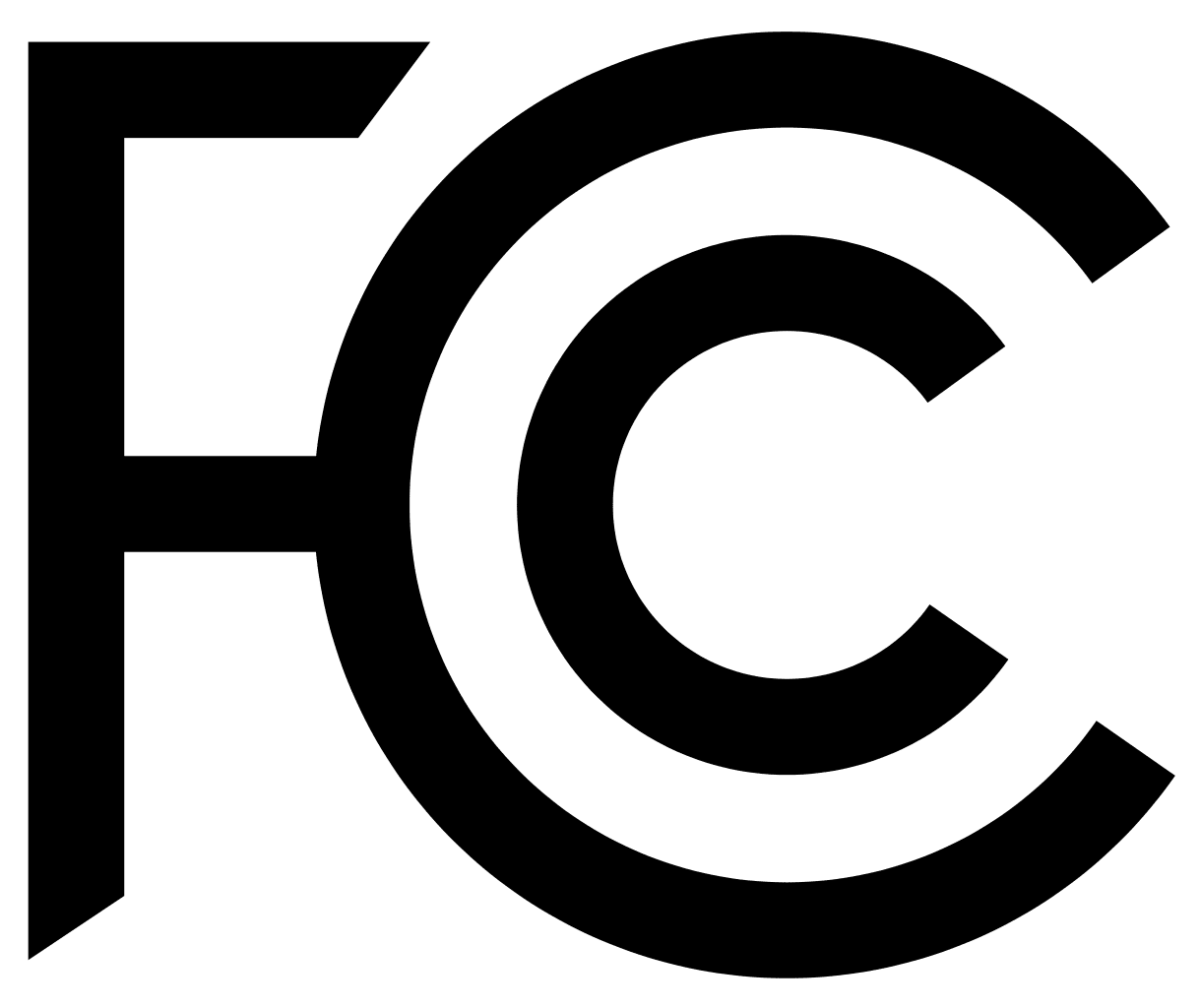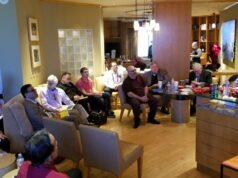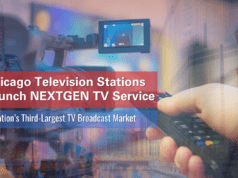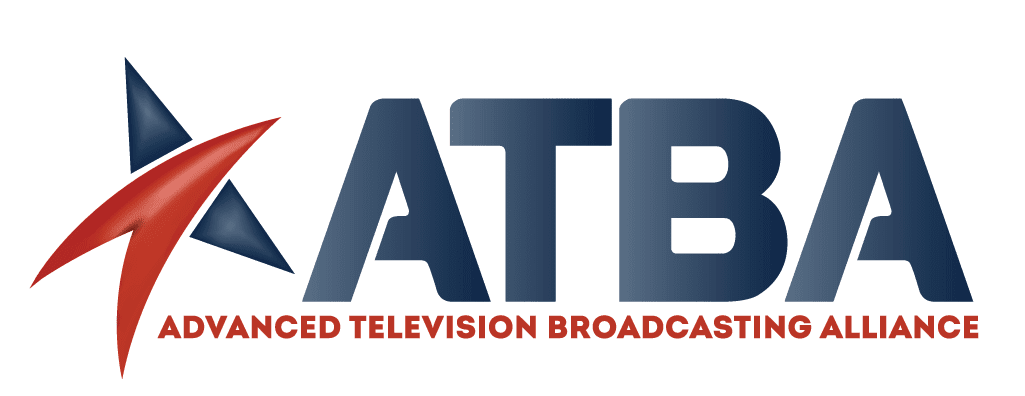Commission Also Seeks Comment on Ways to Remove Barriers to Broadcasters Offering Consumers Innovative ATSC 3.0 Enabled Services
—
WASHINGTON, June 9, 2020—The Federal Communications Commission today took important steps to foster the growth of next-generation data services enabled by the transition of digital television (DTV) to the ATSC 3.0 standard. That standard expands the potential ancillary and supplemental uses of broadcast spectrum for new and innovative services, such as autonomous vehicles, smart agriculture, or telemedicine, that will complement the nation’s burgeoning 5G network. These new offerings over broadcast spectrum are referred to as “Broadcast Internet” services to distinguish them from traditional over-the-air video services, which will continue to be offered alongside new data services.
In its Declaratory Ruling, the Commission clarifies that long-standing television station ownership restrictions do not apply to the lease of spectrum to provide Broadcast Internet services. This means that a broadcast television licensee can lease spectrum to another broadcaster (including one operating in the same geographic market) or to a third party for ancillary and supplementary services without triggering the Commission’s broadcast attribution or ownership rules. In an accompanying Notice of Proposed Rulemaking, the Commission asks whether and how to modify its existing ancillary and supplementary service rules, adopted more than twenty years ago, in order to further promote the deployment of Broadcast Internet services. The NPRM also seeks comment on potential uses of the new technological capability associated with ATSC 3.0 and any existing regulatory barriers to deployment. Additionally, the NPRM specifically asks whether any changes are needed to the ancillary and supplementary service fee rules and the rules defining derogation of service and analogous services.
Today’s action takes important steps to further unlock the potential of broadcast spectrum, empower innovation, and create significant value for broadcasters and the American public alike by removing the uncertainty cast by legacy regulations.
STATEMENT OF
CHAIRMAN AJIT PAI
Many of a certain age remember the days when families would argue about who should have to get up to adjust the rabbit ears in order to improve TV reception. Thankfully, broadcast television has come a long way since then. Over a decade ago, we transitioned from analog to digital. And today, we are on the precipice of yet another leap in broadcasting innovation—ATSC 3.0. Having previewed it myself during a trip to Phoenix, Arizona, I can confirm that we’re no longer in the era of grainy episodes of “Love Boat.”
In 2017, the FCC majority authorized broadcast innovation through ATSC 3.0, or next-generation broadcast TV. Under the ATSC 3.0 technical standard, broadcasters can now provide their traditional, over-the-air services more efficiently using Internet Protocol (IP)-based technologies. ATSC 3.0 has already been deployed by stations in Portland, Boise, Santa Barbara, Phoenix, Dallas, Orlando, and Las Vegas, and we expect more it to debut in more markets later this year.
The new standard also opens up potentially innovative uses for broadcasters’ spectrum, which can be collectively referred to as “Broadcast Internet.” This fulfills an unrealized promise of the digital TV transition—the use of excess spectrum for supplementary or ancillary services, in addition to traditional video programming. ATSC 3.0 can be used to deliver innovative new services related to automotive transportation, agriculture, distance learning, telehealth, public safety, utility automation, and the Internet of Things, to name a few, not to mention others we haven’t even dreamed of. Our goal should be to ensure that the market—not outdated rules—determines which new services and technologies will succeed.
To accomplish that goal in part, today’s Declaratory Ruling therefore clarifies that long-standing television station ownership restrictions do not apply to the lease of spectrum to provide Broadcast Internet services. This is consistent with the underlying purposes of those rules and makes certain what most already believed to be the case. The accompanying Notice of Proposed Rulemaking asks how the Commission should modify or further clarify our existing rules to further promote Broadcast Internet services. We support entrepreneurial and innovative uses of excess broadcast spectrum created by the transition to ATSC 3.0, and at the same time, we want to continue to promote and preserve free, universally available, local broadcast television.
Thank you to the hard work put in by the Media Bureau team—Ty Bream, Michelle Carey, John Cobb, Brendan Holland, Kim Matthews, Shaun Mauer, Evan Morris, Maria Mullarkey, Julie Salovaara, and Sarah Whitesell; their colleagues from the Office of General Counsel—David Konczal and Bill Richardson; the team from the Office of Economics and Analytics— Eugene Kiselev, Emily Talaga, and Andy Wise; and from the Office of Communications Business Opportunities—Belford Lawson. And a special thank you to Commissioner Carr. Commissioner Carr spearheaded this initiative, and I applaud his leadership and commitment to promoting innovation and ensuring that the future of broadcast TV is as bright as the Love Boat’s lido deck.
STATEMENT OF
COMMISSIONER MICHAEL O’RIELLY
Today, we consider a declaratory ruling that might best be described as restating current law and policy. To my knowledge, no active NextGen TV industry participant has suggested that today’s item is needed as a matter of law, notwithstanding assertions otherwise. To the extent we merely restate a point that is widely agreed upon and supported by the Commission’s existing authority, I do not necessarily see a harm in taking this action. Be that as it may, I do question whether this is the best use of our resources when there are many remaining media modernization matters, urgently sought by industry and consumer groups, that need to be addressed and are ripe for action.
At the same time, in response to those who have suggested that today’s action moves us in the wrong direction, muddying the proverbial waters of media ownership, let me be clear: any attempt in the future to reverse today’s Declaratory Ruling would be ineffective in changing the underlying ownership rules, which have no bearing on ancillary services. To the extent that anyone finds the Declaratory Ruling necessary, I also thank the Chair and my colleagues for accepting my request to similarly clarify that during the transition from 1.0 to 3.0, temporary hosting of one station’s simulcast by another will have no effect on ownership considerations.
In a past life, I worked on the Telecom Act of 1996, whose authors anticipated that broadcasters might someday be able to offer new and innovative ancillary services using excess capacity once the digital transition was complete. At the time, no one knew of the yet to be conceived ATSC 3.0 standard or how it might further revolutionize broadcasting. Even today there are still questions regarding how NextGen TV will be monetized as we wait to see how the marketplace treats the technology and its potential functionality. I have written and spoken about these possibilities at length over the past several years, and as someone who has been at the forefront of advocating for this voluntary transition, I can say it is exciting to see more and more stations make the transition this year. Just last week, we saw Las Vegas become the first market to have four major stations broadcasting in ATSC 3.0. There is no doubt that a lot of progress has been made since I visited the first test market in Phoenix years ago to see how many of the beta datacasting efforts were being initiated, followed by a trip to East Lansing to see public broadcasters’ vision for NextGen TV. On that note, as we await further device manufacturing to allow consumers to take full advantage of NextGen TV, we’re already seeing the implementation of one kind of service anticipated in today’s item—educational datacasting. I have been especially impressed by the work of public television stations to increase access to educational services during the current crisis, one of the most significant challenges our educators have faced in several generations, especially given the real possibility that schools may not be able to fully open in the fall. In particular, my staff and I have personally reviewed the South Carolina Public Television resources being made available for school districts across their state, and I have elsewhere noted that a small investment could help to replicate this model across the country.
Much of the NPRM before us today encapsulates my previous efforts to determine what remaining issues need to be addressed to facilitate implementation of ATSC 3.0. It should be no surprise that I have sought guidance from industry on how to ensure that most of the existing restrictions and limitations imposed on broadcasters do not carry over to the non-primary stream. The inquiry into dynamic spectrum management is an interesting one, although there often seems to be some confusion over what people actually mean when discussing the topic, and it’s questionable whether this is the right forum for a lengthy discussion. Somewhere Ronald Coase is having a hearty laugh. In any event, I thank the Chairman for his willingness to work with me to explore the content and timing of an item to further this topic, which is worthy of a deeper discussion, though I am mindful of the extremely busy summer awaiting the Commission staff.
Finally, we probably could have lived without the effort to artificially rebrand the non-broadcast, datacasting services with the questionable term “Broadcast Internet.” Many of the examples cited are one-to-many applications that may very well hold great potential for the future of broadcasting and, indeed, ancillary services, but the term selected by the industry, datacasting, properly captures what this really is. While some are talking about pairing these ancillary downlink services with cellular or other uplinks, it is not the job of the Commission to act as a branding magician in the absence of necessary policy reasons.
This all notwithstanding, we await with great anticipation what the future may hold with regard to NextGen TV, and I look forward to the imminent release of our ATSC 3.0 item, which is currently on circulation. And, I continue to offer to any newly interested individuals a hearty welcome to the discussion, with the hope they find as much promise here as I have over the past many years. – I Approve.
STATEMENT OF COMMISSIONER BRENDAN CARR
Broadcast TV signals blanket the country. And those powerful airwaves are now undergoing their most significant upgrade since 1980s when engineers started their work on the digital television transition. All of that is thanks to a new and innovative broadcast transmission standard known as ATSC 3.0.
To date, much of the attention on this standard has focused on the wide-range of NEXTGEN TV applications it can enable—everything from bringing Ultra HD video to the airwaves to ushering in a more interactive, accessible, and personalized experience for the viewing public.
But those exciting applications only tell part of the story. A year ago, I gave a speech at the NAB convention where I drew attention to an entirely different set of ATSC 3.0 applications. I suggested that we should think about this technology as a new and competitive broadband pipe. After all, the technology can leverage the power and coverage of broadcast transmissions to deliver a 25 Mbps data stream to Americans. That’s why we are seeking to promote this new set of “Broadcast Internet” services with our decision today. That term captures even more of the innovative applications we’re talking about.
These new Broadcast Internet services are part of a broader trend we’re seeing in communications. From innovative 5G offerings to high-capacity fixed services, providers from previously distinct sectors are competing like never before to offer high-speed Internet services through a mix of different technologies. ATSC 3.0 is the technology that will allow broadcast spectrum to play an even greater role in this converged market for connectivity.
As our networks continue to mature, they won’t always rely on the same spectrum bands for inbound and outbound data paths. Instead, hybrid networks will look for the most efficient and cost-effective ways to deliver content to users. This will be the future of connectivity. And this is where broadcast spectrum, delivering Broadcast Internet services, can leverage its inherent strengths to compete in this market. Those strengths include wide-area coverage over low-band spectrum and an efficient one-to-many architecture.
Take autonomous vehicles, which is just one area where Broadcast Internet services could play a pivotal role. It could send out targeted map and traffic data or provide large, fleet-wide software updates—quickly and efficiently.
For IoT, smart ag, and telemedicine applications, Broadcast Internet’s low-band spectrum could provide an efficient means of communicating with devices over wide areas.
For 5G, it could help augment coverage or add capacity by shifting data off cellular networks.
For both fixed and mobile services, as we look to push more and more data to the edge of the network, Broadcast Internet services could provide one way of moving all that data in an efficient and cost-effective manner.
And for many Americans, this new technology means they could have another option for high-speed downloads—from movies to applications—delivered over the same spectrum that they’ve long used for over-the-air television.
At the Commission, we have been doing our part to facilitate deployment of ATSC 3.0. Over the objections of some, we authorized broadcasters to transition voluntarily to ATSC 3.0 offerings in 2017 so they could test the market and explore the possibilities of this new technology. Since then, the Media Bureau has worked collaboratively with broadcasters to address many of the technical and licensing issues that have come up. And we recently initiated a proceeding to expand the use of single frequency networks, which will ultimately help ATSC 3.0 reach its full potential, whether we are talking NEXTGEN TV or Broadcast Internet services.
This approach has worked. Broadcasters are making great progress in their NEXTGEN TV offerings, and many are already exploring ways to support Broadcast Internet services.
But I think there is more we can do to green light Broadcast Internet offerings and encourage even more investment in these services. That is why I took the lead on this item, which will further unlock the potential of broadcast spectrum, empower innovation, and create significant value for broadcasters and the American public alike.
The item does so by removing the uncertainty cast by media regulations that were drafted for an entirely different set of broadcast TV services. In the Declaratory Ruling, we ensure that Broadcast Internet services are not weighed down by legacy media regulations by clarifying that the Commission’s broadcast television station ownership rules do not apply to leasing arrangements between broadcasters and third parties for the provision of Broadcast Internet services.
In practice, here’s what this decision would mean: It would allow a broadcaster or any other entity to enter into lease agreements with multiple broadcasters in a single geographic market for purposes of offering Broadcast Internet services without triggering the Commission’s attribution or ownership rules for television stations. This can provide certainty to broadcasters, investors, tech companies, and other innovators that these agreements will not be subject to dated rules designed to regulate television stations—not autonomous vehicles or telemedicine applications. And this decision helps ensure that broadcasters and other innovators have the flexibility to generate the scale and geographic footprint—both locally and nationally—that may be necessary to support certain Broadcast Internet services.
In today’s accompanying Notice of Proposed Rulemaking, we seek comment on whether to clarify or modify our existing rules to further promote the deployment of Broadcast Internet services. Ultimately, it is critical that we identify and remove the overhang of unnecessary government regulations that would otherwise hold back the introduction and growth of new competitive offerings. We want the marketplace—not outdated rules—to determine whether new services will succeed. This new proceeding is an important step in that direction, but it certainly won’t be the last.
In closing, I would like to thank Chairman Pai for his continued support for the deployment of ATSC 3.0 and the consumer benefits and innovations it will support. I would also like to recognize the team at the FCC who helped lead this effort, including, in the Media Bureau, Julie Salovaara, Kim Matthews, John Cobb, Ty Bream, Brendan Holland, Maria Mullarkey, Evan Morris, Sarah Whitesell, and Michelle Carey; in the Office of Economics and Analytics, Emily Talaga, Eugene Kiselev, and Andrew Wise; in the Office of Communications Business Opportunities, Belford Lawson; and in my old stomping grounds, the Office of the General Counsel, David Konczal and Bill Richardson.
STATEMENT OF COMMISSIONER JESSICA ROSENWORCEL
These days my family is watching more television than ever before. I bet we are not the only ones. There’s more time at home. So we sit together at night, basking in the glow of a single screen after first arguing about what it is we are going to watch. A good portion of that viewing is from the vast libraries of content that allow us to choose what we want to watch when we want to watch it. But linear programming still has a powerful draw. It’s still the place where so many of us—my family included—go for not just entertainment but essential news about our community, our country, and our world.
Plus, traditional television is on the move. A new broadcast standard is on the horizon. ATSC 3.0 promises Ultra High Definition picture quality and immersive audio, advanced emergency alerts, and interactive services. This is good stuff. It could mean real innovation in broadcasting—on par with new services that have emerged on so many of the other screens around us.
But as this standard develops, we still need to address how consumers—folks watching at night just like my family—will navigate this transition. That’s because ATSC 3.0 is not compatible with current television devices. To see its benefits, we will all need to replace our television sets or buy new equipment. That’s an expensive problem we need to address because saddling consumers with big costs in this transition is not right.
At the same time, we should responsibly explore legal and technical issues that stand in the way of this standard’s further development. That’s what this declaratory ruling and rulemaking does today.
We clarify that long-standing television station ownership restrictions do not apply to the lease of spectrum to provide other services. This is important, because ATSC 3.0 has the potential to grow the things we can do with broadcast spectrum beyond over-the-air video. In fact, because ATSC 3.0 uses internet protocol to deliver its signals, and because it can push much larger volumes of data, it turns out that same bandwidth might be used to help deliver internet access too.
Of course, there are real challenges here. For starters, ATSC 3.0 lacks a return path. That means while it can push data to the public, it can’t receive data back. That’s a big obstacle for work, education, or telehealth online. Because as our movement to online life during the past several weeks has demonstrated, we are going to need more symmetrical connections to support next-generation services on our networks. In addition, any broadcast spectrum for new internet services will differ from market to market. That means it might be hard to cobble together airwaves to provide data services at competitive speeds with a nationwide footprint. Finally, without a market-based effort to put new chips in a range of devices, broadcasters might instead put these airwaves to use by just leasing it out to the same wireless carriers we are familiar with today.
To expand connectivity across the country, we need new ideas and new technologies. We’re exploring everything from drones to hot air balloons to internet light bulbs. So let’s add ATSC 3.0 to the mix. We need all the ideas we can muster and as a result, this decision and rulemaking has my support.
Action by the Commission June 9, 2020 by Declaratory Ruling (FCC 20-73). MB Docket No. 20-145











